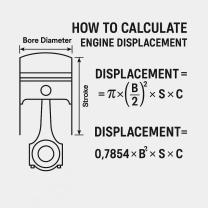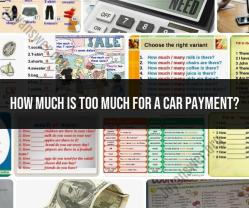What are Kelley Blue Book values?
Kelley Blue Book (KBB) is a well-known and respected automotive valuation and automotive research company in the United States. It provides information about the value of new and used cars, including motorcycles, boats, and recreational vehicles. The values offered by Kelley Blue Book are widely used by buyers and sellers in the automotive market to determine fair prices for vehicles.
The Kelley Blue Book values are categorized into different types:
Suggested Retail Price (MSRP): This is the manufacturer's suggested retail price and represents the amount a consumer can expect to pay for a new vehicle at a dealership. It serves as a baseline for negotiation.
Fair Market Range: KBB provides a range of prices that buyers can expect to pay for a specific make and model of a new car. This range is influenced by various factors, including the current market conditions, regional demand, and dealer pricing strategies.
Private Party Value: This is the amount a buyer can expect to pay when purchasing a used car from a private seller. It takes into account the condition, mileage, and other factors that may affect the value of the vehicle.
Trade-In Value: This value represents the amount a consumer can expect to receive when trading in a used car at a dealership. It considers factors such as the vehicle's condition, mileage, and market demand.
Certified Pre-Owned (CPO) Price: For certified pre-owned vehicles, KBB provides a value that reflects the premium associated with purchasing a certified, inspected, and warrantied used car from a dealership.
Kelley Blue Book values are widely used by individuals buying or selling cars, as well as by dealerships, financial institutions, and insurance companies. The values are updated regularly to reflect changing market conditions and trends in the automotive industry. It's important to note that while KBB values are a valuable reference, the actual transaction price can be influenced by factors such as negotiations, vehicle condition, and local market conditions.
What do Kelley Blue Book values represent?
Kelley Blue Book (KBB) values represent the estimated fair market range for a particular vehicle, based on a comprehensive analysis of various factors, including:
Vehicle make, model, and year: This is the most fundamental factor in determining a vehicle's value. KBB tracks sales data for different vehicles to assess their depreciation rates and current market demand.
Mileage: Higher mileage generally translates to lower value, as it reflects wear and tear on the vehicle. KBB considers mileage when determining the fair market range for a used car.
Condition: The overall condition of the vehicle plays a significant role in its value. KBB distinguishes between different condition grades, such as "excellent," "good," "fair," and "poor," with each grade affecting the valuation.
Options and features: Vehicles with desirable options and features, such as leather seats, sunroof, or navigation system, tend to command higher prices. KBB accounts for these features in its valuation process.
Location: Vehicle values can vary depending on the geographic region. KBB takes into account regional market trends and demand patterns to provide localized valuations.
How are vehicle values determined in Kelley Blue Book?
KBB employs a data-driven approach to determine vehicle values, utilizing a combination of sources:
Actual sales transactions: KBB collects and analyzes data from actual sales transactions, including retail sales from dealerships and private party sales. This data provides insights into real-world pricing trends.
Auction prices: KBB also considers auction prices, where vehicles are sold to dealerships and wholesalers. Auction prices reflect wholesale market conditions and influence retail pricing.
Industry expertise: KBB's team of automotive experts continuously monitors market trends, analyzes new vehicle releases, and assesses factors like fuel efficiency and safety ratings. Their expertise guides the valuation process.
Statistical modeling: KBB utilizes advanced statistical models to analyze the vast amount of data it collects. These models help identify patterns, predict future trends, and refine the valuation process.
Are there factors influencing the valuation process in Kelley Blue Book?
Yes, several factors can influence the valuation process in Kelley Blue Book:
Seasonality: Vehicle values can fluctuate seasonally, with demand typically higher during warmer months. KBB adjusts its valuations to account for seasonal trends.
Economic conditions: The overall economic climate can impact vehicle values. During economic downturns, demand for used cars may increase, leading to higher valuations.
Supply and demand: The balance between supply and demand for a particular vehicle can significantly affect its value. If demand exceeds supply, prices tend to rise, and vice versa.
Local market conditions: Regional demand, transportation infrastructure, and local preferences can influence vehicle values in specific areas. KBB takes into account these factors when providing localized valuations.
Emergence of new technology: The introduction of new technology, such as advanced safety features or fuel-efficient powertrains, can impact the value of older models. KBB considers these advancements when determining valuations.












